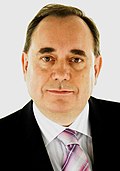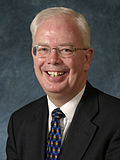Overview
Background
There was some speculation that these elections would be the last under the present two-tier system, as a review of council areas had been announced by the incumbent Conservative Government (The last elections were in fact the 1994 regional elections). The elections were seen as a test of the Conservative Government elected a month before in April, where the Conservatives had increased their vote share, much to the surprise of pollsters.
Outcome
The election saw a decrease in turnout of more than 5%, the lowest since District Council elections were introduced in 1974. The number of women candidates increased to 26.7%, although only 21.5% of elected councillors were women, showing that the main parties often preferred to nominate men in wards where they had a better chance of winning. Labour saw a sharp fall on their vote share, down 8.5% from 1988. The main beneficiaries of this decline were the Conservatives, up 3.8%, but still in third place behind the SNP, who gained 3.0%. The Liberal Democrats also made modest gains, taking a new record of 95 seats.
Regional Trends
Labour held most of their strongholds in the central belt, as well as Dundee and Aberdeen; even though their vote share decreased more in these areas (Such as East Lothian, down 13% from 1988 and Glasgow, down 11.8%) than elsewhere. The Conservatives were most successful in places were they hadn't stood many (if any) candidates before, such as Clackmannan (where the party only stood two candidates in 1988). Independents remained the largest party in rural areas, while the Liberal Democrats held their two councils of North East Fife and Annandale and Eskdale. [1]
This page is based on this
Wikipedia article Text is available under the
CC BY-SA 4.0 license; additional terms may apply.
Images, videos and audio are available under their respective licenses.




